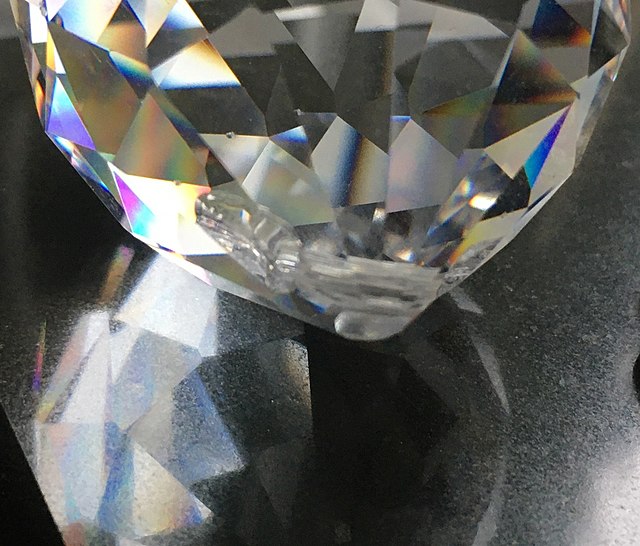Top Qs
Timeline
Chat
Perspective
Cut (gems)
Shaping a gemstone for use in jewelry From Wikipedia, the free encyclopedia
Remove ads
A gemstone desired to be used in jewelry is cut, carved or made into a bead. The best quality rough is cut, also often referred to as faceting. This is done by a lapidary who decides how to reshape the gemstone using knowledge of the refractive index of gemstones to maximise any particular crystal's colour or play of light.[1] As a general rule, a cut gemstone will be reduced in mass (in carats) by about 50%.[2]

Among the several techniques used to work with gemstones are sawing, grinding, sanding, lapping, polishing, grilling, and tumbling. The diamond cut planning stage is a complex process that requires the cutter to work with unique rough stones. Very often, the location of the inclusions in a rough stone will determine the type of shape to which a diamond may be cut. For economic reasons, most diamonds are cut to retain weight instead of maximizing brilliance.[3] How diamonds have been cut has evolved over time largely to technological advances.[4]
Remove ads
Types


- Asscher cut
- Baguette cut
- Brilliant cut
- Briolette
- Cabochon
- Cushion cut or old mine cut
- Emerald cut
- Pendeloque cut
- Princess cut
- Radiant cut
- Rose cut
- Trilliant cut, a.k.a. trillian or triangle cut
See also
References
Further reading
External links
Wikiwand - on
Seamless Wikipedia browsing. On steroids.
Remove ads
